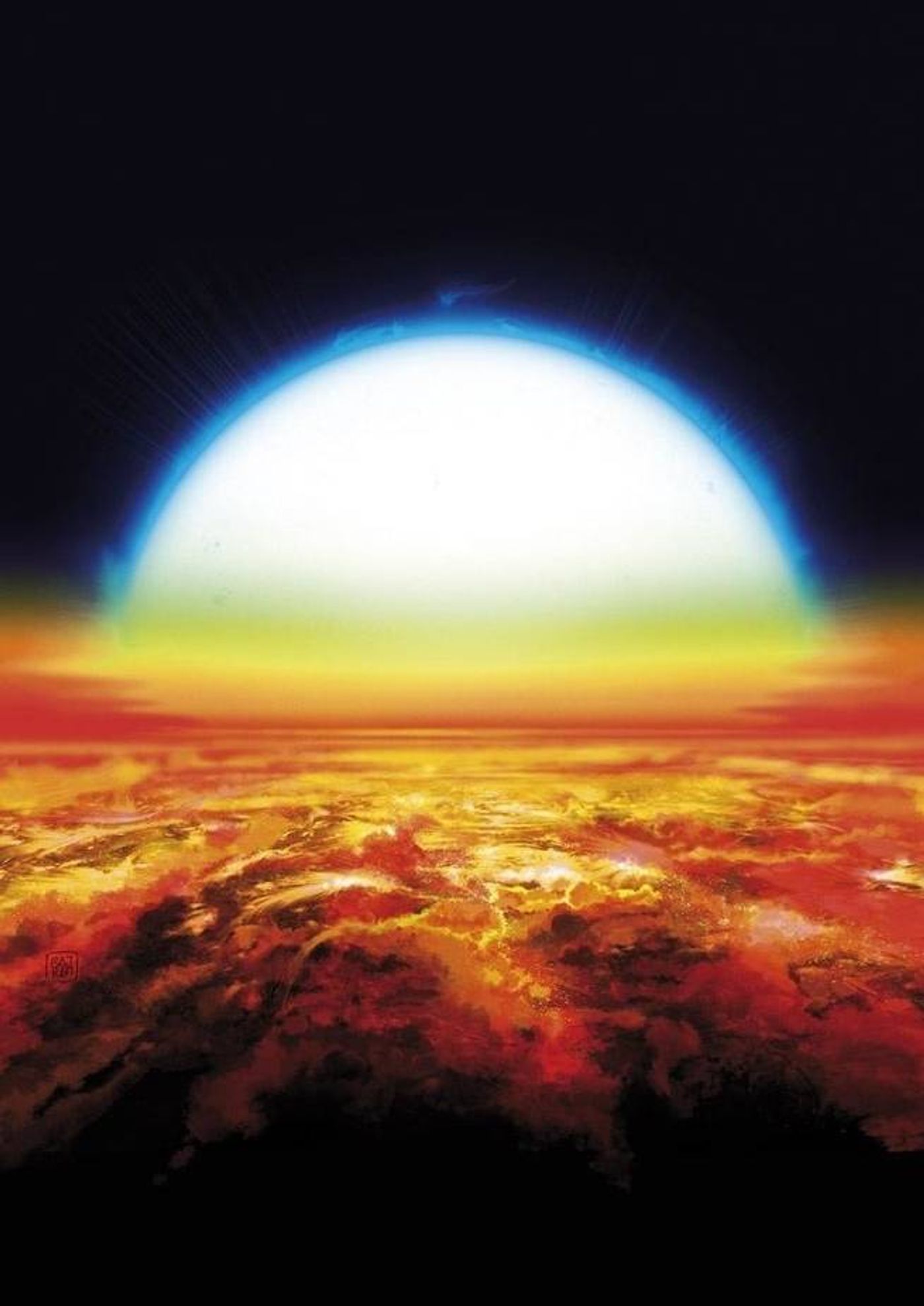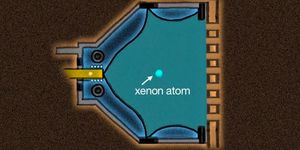This Hot Exoplanet's Atmosphere Contains Gaseous Atomic Iron and Titanium
Exoplanetary research is a hot commodity among astronomers. Not only can it teach us more about planetary formation and the birth of our solar system, but it can also open our eyes to another world’s potential habitability, among other things.
Image Credit: Denis Bajram
Given the popularity of studying other words, it shouldn’t come off as much of a surprise that a team of astronomers recently peered a distant hot Jupiter-like exoplanet dubbed KELT-9b through the lens of the Canary Islands-based Telescopio Nazionale Galileo. But what they later learned from these observations after using the telescope’s built-in HARPS-North spectrograph is a bit of a shocker.
Their findings, published this week in the journal Nature, describe an exoplanet so hot that its atmosphere contains vaporized particles of atomic iron and titanium. Fascinatingly, it’s the first known instance where astronomers have detected iron and titanium vapors in an exoplanet’s atmosphere.
"It is the first time that iron and titanium have been robustly detected in the atmosphere of any planet beyond the solar system," explained study co-author Kevin Heng from the University of Bern in Switzerland.
Related: This might be one of the darkest exoplanets ever discovered
KELT-9b resides 650 light-years away from Earth in the constellation Cygnus and reaches temperatures that exceed 4,300º Celsius. Comparatively, the Sun’s surface reaches temperatures of approximately 5,600º Celsius. Yeah… let that sink in for a moment.
The exoplanet realizes these jaw-dropping temperatures because, like most hot Jupiter-like exoplanets, it orbits its host star rather closely. In this case, it orbits KELT-9 ten times more closely than Mercury orbits the Sun.
"Our understanding of exoplanet formation tells us that the star and the exoplanet formed from a common disk of dust and gas," Heng added. "Deciphering the chemical composition of KELT-9b's atmosphere will give us some chance at understanding its formation history."
Related: Exoplanetary habitability depends on the UV light being emitted from the host star
The astronomers hope that additional observations will provide clues about KELT-9b’s formation, and more importantly, reveal how gaseous atomic iron and titanium came to be in the exoplanet’s super-heated atmosphere.
Source: Popular Science









